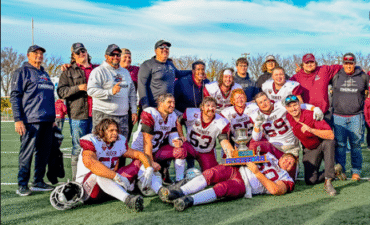
B.C. Lions quarterback Buck Pierce scrambles from the pocket, looking to pick up a first down. Maurice Lloyd, a linebacker for the Saskatchewan Roughriders, meets Pierce in the hole and tackles him head first, knocking Pierce unconscious.The crowd at Mosaic Stadium rises to its feet and roars in approval as Lloyd celebrates mere feet away from Pierce’s prone body.
That was in 2008. In 2019, things are different.
There isn’t so much cheering now after we see a football player take a blow to the head. And that is because of the new things we are learning about concussions. Especially concussions as they relate to football.
“I think that because of all of the awareness related to concussions in sport, I think the public are beginning to understand that there’s potential danger,” said Patrick Neary, a Kinesiology and Health Studies professor at the University of Regina, who has done extensive research on concussions.
“I think the public are becoming more aware that getting hit in the head is detrimental. And I know for a fact that the registration for minor football, particularly in the United States, is down. There’s less kids going into minor league football now these days than ever before.”
Dean Andrews has been coaching six-man football in Southey since 1995. Through the years, he has seen the landscape of high school football change as it relates to concussions.
“In 2016, Football Saskatchewan mandated that all amateur football coaches in Saskatchewan be trained in a concussion awareness and identification protocol which was an online course,’’ Andrews said.
“This was free to all coaches if completed by a given date. The SHSAA (Saskatchewan High Schools Athletic Association) was also active in promoting this training. Coaches have also been trained recently in safe tackling and blocking techniques which proactively may help with the prevention of concussions.”
Andrews also mentioned that some football programs have begun to mandate baseline concussion testing for their players before practices and games. Not only has the testing for concussions changed, the on-field product has changed as well. Football Saskatchewan has even borrowed from the U.S. college game, ejecting players whose blows to the head are clear and obvious.
“The other thing that has changed noticeably is the way the rules of the game have adapted and changed,” Andrews said. “At one time big hits were celebrated. Today, they are flagged as unnecessary roughness or targeting.”
Andrews has also noticed a change in how receptive the players are when learning about concussions.
“I believe players are more open about concussions because of education which enhances awareness,” Andrews said. “The media certainly has had an influence on this awareness. “
Neary pointed out that younger players need to be careful when it comes to concussions because their brains are still in the developmental stage.
“One of the problems is that with younger players, the brain is still developing,” Neary said. “And so that’s where we have to be really, really careful for our younger players is that if they’re getting (concussions) at the age of 13, 14, 15, the brain is still really developing and it still has another 10 or 12 or 15 years to develop. If you’re getting these concussions during that time what we need to find out more is what are the long term effects of that?”
Neary also cautioned that concussions are a brain injury that should be taken seriously. Should a player receive one, his coach needs to make sure the player sits out long enough so the symptoms and potential consequences disappear. That way, when a player returns to play, there’s no concern the player is going back too early.















